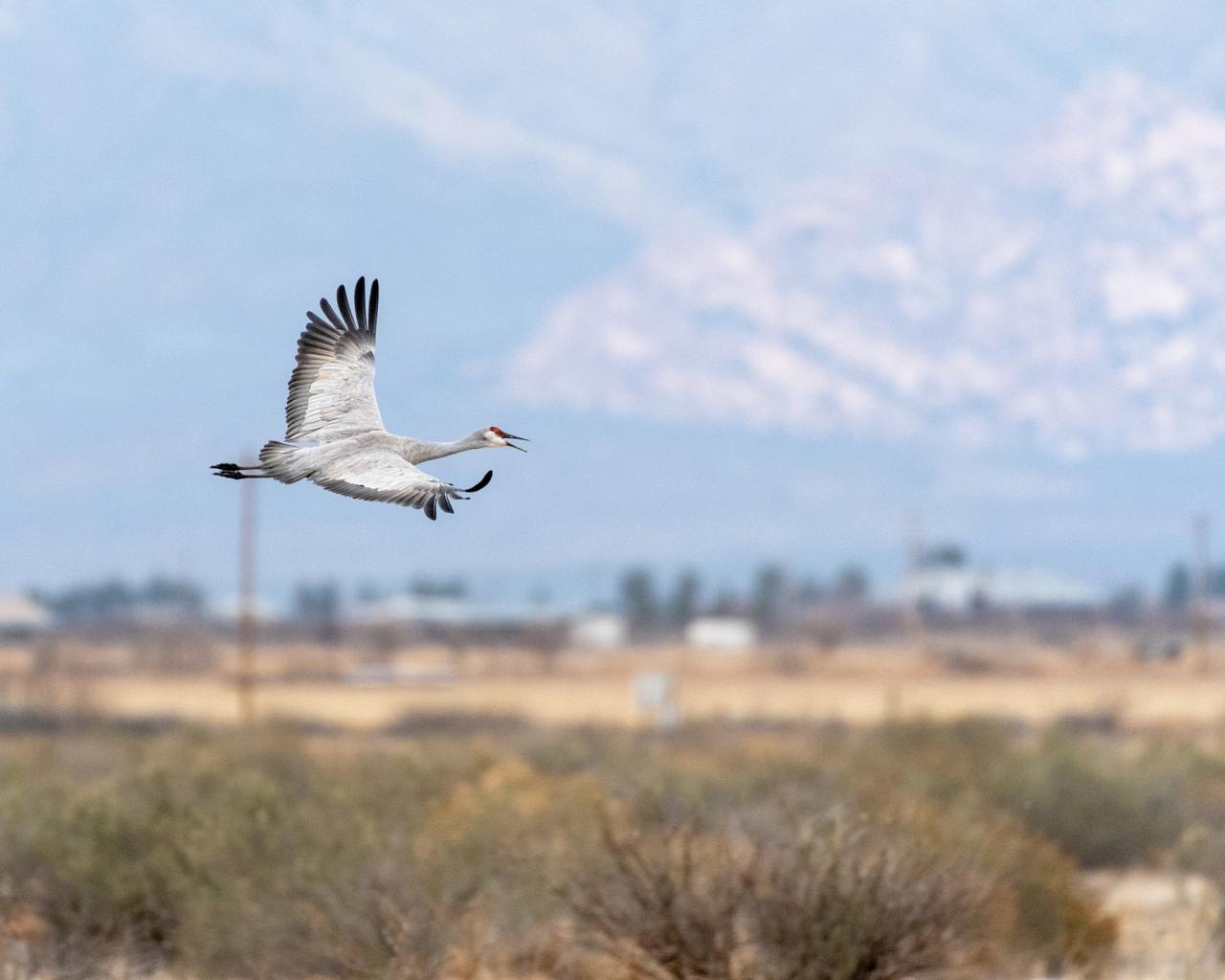- Overview
- Full Itinerary
- Photo Gallery
- Costing
- Travel Details
- Trip Reports
- Guides
- Map
- Know Before You Go
- Other Trips You May Like
Arizona is a region marked by spectacular scenery and sharp contrasts. Towering saguaro cactus, sandy washes, and granite outcroppings typify the Sonoran Desert, while creosote and yucca dominate the Chihuahuan Desert landscape. These beautiful deserts are home to iconic desert species such as Greater Roadrunner, Cactus Wren, and Verdin. Rising from the desert like green islands, mountain ranges clad in Madrean pine-oak woodlands provide a habitat unique within the United States; between these fault-block mountain ranges expansive valleys provide prime winter habitat for sparrows and numerous birds of prey. Lakes and ponds attract wintering waterfowl, hummingbirds are present at feeders while woodpeckers delight in tall saguaro cactus forests as well as cottonwood groves where local rivers wind through the valleys. From two comfortable lodges we enjoy winter birding highlights of the region, taking in sunshine and scenic beauty. Where else in the United States can you take a time out from watching so many dazzling birds to simply enjoy the scenery? All of these factors contribute to Arizona being one of the most exciting regions for birding in the United States! All four seasons are good here, and different.
January hosts excellent winter birding, the mix of habitats we visit provide food and shelter for resident and overwintering species. Sandhill Cranes occur in the tens of thousands and a high diversity of raptors gather for fine viewing on power lines, ranch tree plantings and irrigation equipment in the agriculturally rich Sulphur Springs Valley. Enjoy a wonderful escape from cold weather that’s timed for you to relax after the holidays.
What could be more rejuvenating than a stay at the welcoming Casa de San Pedro and the Amado Territory Inn? These two small, boutique hotels feature great hospitality and birding.
In addition to birding, learn a bit of history in the mining towns of Bisbee and Tubac. Sample regional wines as we enjoy fun local restaurants. While we can’t promise to be back for the Casa’s famous pies every afternoon, it is certainly our intention! We aim for great birding days afield, but this tour is paced so you can enjoy the inn and all its charms.
You can do as much or as little as you wish! If you would like a longer vacation, we suggest you add on some extra time in Tucson to continue to enjoy the area’s saguaros, sunshine, Mexican restaurants, art galleries, and museums.



Tour Highlights
- Visit hotspots like Ramsey and Miller Canyons, the feeders at Ash Canyon, the San Pedro River, and more
- Marvel at the spectacle of tens of thousands of overwintering Sandhill Cranes! Watch them fly in to roost at sunset and also observe them feeding during the day
- Experience prime time for finding a good number and variety of wintering raptors in the Sulphur Springs Valley around Whitewater Draw, including Ferruginous Hawk and up to four species of falcons
- Sparrows abound; once a small pond had three species of longspurs!
- Find hummingbirds, including Rivoli’s, Costa’s, Broad-billed, Anna’s, Blue-throated Mountain Gem and hopes for the Violet-crowned Hummingbird that often overwinters at Audubon’s Paton Center for Birds
- Meet local experts from the Southeastern Arizona Bird Observatory and learn about their research
- Explore Bisbee, a colorful, historic mining town; enjoy lunch and the chance to shop or check out the Smithsonian-affiliated museum
- Find camaraderie at catered meals and dining at our favorite local restaurants
- Extend your stay in Tucson among sunshine and saguaros



Trip Itinerary
Itineraries are guidelines; variations in itinerary may occur to account for weather, road conditions, closures, etc. and to maximize your experience.
Sat., Jan. 18 Arrival in Tucson | South to Tubac
Our tour starts at 1:00 PM in Tucson where we can pick you up at the airport or a nearby airport hotel. We head south along the Santa Cruz River, a renowned birding corridor. We leave the city behind, and immediately the shapes of multiple Sky Islands appear—we are surrounded by a series of small, but fascinating mountain ranges. Most prominent are the Santa Rita Mountains which hold legendary birding hotspots like Madera Canyon.
Have your binoculars handy! We swing into the beautiful San Xavier de Bac mission, where some Sonoran Desert species dwell in the riverbed. It’s a striking site of historical note we think you’ll enjoy. We make a couple of other stops as well—guide’s choice today depending on recent sightings in the Tucson area.
We reach the Tubac Golf Resort & Spa in time to settle into our rooms, and then enjoy some social time with refreshments before heading to a local restaurant. Those driving may wish to just meet us at the Inn or at our first chosen birding location today.
Accommodations at the Tubac Golf Resort & Spa (D)
Sun., Jan 19 Santa Cruz Valley Birding Hotspots: Canoa Ranch, Madera and Other Canyons | The Santa Cruz River Trail
Ponds at Canoa Ranch Conservation Park are a magnet for wintering waterfowl and we should find a good mix of them here today. The backdrop views of the Santa Rita Mountains are grand in scale and we watch the sky for raptors as well.
Box, Montosa, and Madera Canyons are carved out of the Santa Rita Mountains. Box Canyons gives us the chance to look for Costa's, Broad-billed, and Anna’s Hummingbirds, Rock & Canyon Wren, Greater Roadrunner and Black-headed Grosbeak.
Madera Canyon, one of the most famous birding areas in the United States, is a north-facing valley in the Santa Rita Mountains with riparian woodland along an intermittent stream, bordered by mesquite, juniper-oak woodlands, and pine forests. Madera Canyon is home to over 250 species of birds, and in berry years a good spot to find wintering Elegant Trogon, possibly wintering Painted Redstart. Arizona Gray Squirrel can be found here, and Black-tailed Jackrabbit occur in the grasslands surrounding the peaks. Acorn Woodpecker call from their food-storage trees and Arizona Woodpecker may visit local feeders to join the array of hummingbirds. We may also see Common Bushtit and Hutton’s Vireo and certainly Mexican Jay. Depending on what we find here, we may also venture in to Montosa Canyon, another productive birding hotspot.
We want to save time for the river trail near Tubac, where recent winters have had some great birds, Rose-throated Becard, Sinaloa Wren — who knows what we find! Every day birding here is a true adventure. Tubac also has some fun dining and artisan shops, as well as a historic presidio.
Lunch and dinner are at local restaurants.
Accommodations at the Tubac Golf Resort & Spa (B,L,D)
Mon., Jan. 20 Patagonia Lake & Hummingbirds | Sonoita Grasslands | San Pedro River
After a great breakfast at the resort, we pack up our gear, and head towards the Huachuca Mountains and our next lodgings at the Casa de San Pedro. We make this a full day, as we pass through prime birding areas along the way.
Our first stop is at Patagonia Lake, where the inlet to the lake often shelters an overwintering Elegant Trogon. They like to feed on Giant Water Bugs! A variety of ducks may be on the water, and in the shrubby vegetation rimming the lake we can find wintering warblers, vireos, and gnatcatchers. Then it’s on to the hamlet of Patagonia. We enjoy lunch here at a favorite café and then check out what’s happening at feeders at Tucson Audubon’s Paton Center for Hummingbirds and other sites of interest. There is a nature trail winding through mesquite woodlands and riparian areas that connects to the local Nature Conservancy Reserve for those that wish to wander. Species we may see here include Violet-crowned Hummingbird, Cassin’s Finch, Rufous-winged Sparrow, Canyon Towhee, and Lazuli Bunting.
From here it’s about an hour and a half to our lodgings, and we stop at a couple of water features in lush grasslands that often attract a mix of sparrows and longspurs and pipits. Watch for Pronghorn, Prairie Falcon, and Golden Eagle that all live in this expansive terrain. A line of large cottonwoods along the San Pedro River and mountain views in three directions frames our backyard for the next three days.
Our wonderful hosts Patrick Dome and Karl Schmitt are waiting for us at the Casa de San Pedro.
Accommodations at Casa de San Pedro, Hereford (B,L,D)
Tues., Jan. 21 Sulphur Springs Valley | Whitewater Draw
Our focus today is on the grassland habitats of the Sulphur Springs Valley and the low wetland area of Whitewater Draw. After breakfast, we depart to explore areas productive for sparrows, longspurs, and raptors around Elfrida and north to Kansas Settlement. The entire valley is a major wintering ground for raptors, including Prairie Falcon, Ferruginous Hawk, and Golden Eagle — we may see ten or so raptor species today, with hundreds of individuals. With searching we could also find Long-billed Curlew feeding in agricultural fields and perhaps Mountain Plover, though over the years their numbers have declined — we will be watching!
Within this expansive valley is a wildlife area that wintering cranes use extensively called Whitewater Draw. We stop mid-morning when they come back in from feeding to take in the spectacle of seeing them by the thousands and to watch their behavior. There is a good variety of waterfowl here, shorebirds such as Wilson’s Snipe, Long-billed Dowitcher, Least Sandpiper, and other species. There is often a Vermilion Flycatcher perched up for inspection, perhaps a Say’s Phoebe and with luck a covey of Scaled Quail.
The valley is large, and in some years we go all the way up to Willcox Playa if we hear of species there that warrant the drive. Either way we aim to find a mix of wintering sparrows and longspurs, a good variety of raptors and always a few surprises. Plan for a long day, but this should be an excellent birding day on all accounts.
Tonight, enjoy dinner at the Casa, and for those that wish, a chance to catch up our species list around the fireplace. Casa de San Pedro is a nationally acclaimed inn; they say it is 90 miles from Tucson and inches from heaven. We agree! We find it the ideal location for our group, with meeting space, incredible hospitality, active bird feeders, a pond, and the San Pedro River right outside our door.
Accommodations at Casa de San Pedro (B,L,D)
Wed., Jan. 22 San Pedro River | Local Feeders of the Huachuca Mountains
Enjoy a lovely breakfast at the Inn today. Mid-morning, we drive a short way downriver to the Bureau of Land Management’s San Pedro House, a visitor center with walking trails north of the Inn on the San Pedro River. Here we search for birds of the cottonwood riparian areas, adjacent mesquite woodlands and grasslands —Northern Harrier, Loggerhead Shrike, Crissal Thrasher, Lark Bunting, Lark Sparrow, Abert’s Towhee, and other species occur here. Some years a Western Screech Owl likes to sunbath from his cottonwood-tree home.
We enjoy our lunch with the birds at some local feeders, then continue to the Southeastern Arizona Bird Observatory’s Ash Canyon property to meet some of their staff and to look for hummingbirds such as Rivoli’s, Anna’s, and Broad-billed, as well as other specialties of the pine-oak woodlands. With luck Arizona Woodpecker come in, and Woodhouse’s Scrub Jay. Our photographers are always happy here!
Tonight, enjoy dinner at a favorite local restaurant. Those that wish can tally up sightings of the day with your guide once back at the Casa.
Accommodations at the Casa de San Pedro (B,L,D)
Thurs., Jan. 23 Ramsey Canyon | Bisbee | Sunset with Cranes
Our early birds can check the Casa’s backyard of riparian cottonwoods and mesquite grassland for species like Scaled Quail, Gila Woodpecker, Pyrrhuloxia and Abert’s Towhee, while others can enjoy a more leisurely sleep in.
We have breakfast at 8:00 AM and then head off to The Nature Conservancy Preserve at Ramsey Canyon—one of the first well-known birding sites in Southeast Arizona. Here, Ramsey Creek descends through oak woodlands, its banks lined with massive sculptured trunks of Arizona Sycamores. We hope to see Wild Turkey, some wintering warblers such as Townsend’s and Painted Redstart, perhaps Red-naped Sapsucker and Hutton’s Vireo. Hummingbird feeders may delight us with a sighting of Blue-throated Mountain-gem, the largest hummingbird species in the United States. Walk the trails, browse the bookstore and gift shop, or park yourself under a tall, bending sycamore to wait for the birds to come to you! We may also stop at another favorite spot nearby if we know of good bird activity there in shrubs that can be loaded with berries.
This afternoon, after a nice break back at the Inn (they always have fresh-baked pies...) we return to the historic town of Bisbee and continue on to Whitewater Draw for sunset with Sandhill Cranes pouring in to roost in the ponds there — an unforgettable sight! If some want some “town time” we can send one van on ahead early.
It is your vacation and a bit of a splurge is in order! As we pass through Bisbee coming back from the cranes, we have reservations at Café Roka, one of Arizona’s most well-loved restaurants. Luckily while the food is fine there is no need to dress up, which is a good thing as we’ll be in crane-viewing clothes, celebrating a wonderful week in the wilds.
Accommodations at Casa de San Pedro (B,L,D)
Fri., Jan. 24 Birding & Breakfast | Departures from Tucson
Our plan is to offer optional birding along the river early, enjoy a nice breakfast, pack and to return to the airport by 10:30 for flights out after NOON. If some have flights a bit later and there’s a bird calling to us at a nearby stop in Tucson, we give it a try! (B)
Cost of the Journey
Cost of the journey is per person, based on occupancy: $3190 DBL / $3940 SGL from Tucson, AZ. This cost includes accommodations for six nights, meals as specified in the itinerary (B=breakfast, L=lunch and D=dinner), professional guide services, other park and program entrance fees and miscellaneous program expenses. Cost does not include: round-trip airfare to and from Tucson, items of a personal nature such as laundry, telephone, drinks from the bar, or gratuities for luggage handling or personal services.
Travel Details
Please plan to make air travel plans only after the minimum group size has been met. We will send you a confirmation email as soon as the trip has been confirmed.
Arrival and Departure Airport: Tucson International Airport (TUS)
Arrive: January 18, no later than 1:00 PM
Depart: January 24, after 12:30 PM
Hotel Recommendations: If you want to relax and stay near the airport after arrival (we can pick you up at these hotels), we recommend: Courtyard by Marriott Tucson Airport (520) 573-0000. Does staying downtown and exploring the many shops and restaurants sound interesting? We would recommend: Home 2 Suites by Hilton (520) 274-7400 The Leo Kent Hotel by Marriott (520) 549-5330. If you have a rental vehicle and plan on visiting Tohono Chul, a great hotel in that area is La Posada. There are many restaurants in this area as well. La Posada Lodge & Casitas (520) 492-6637
Travel Tip: If you want to arrive a day or two early, Tucson is a great city to explore. The world-renowned Arizona-Sonora Desert Museum is a fun place to spend part of a day with a zoo, natural history museum, and botanical gardens all in one location. Tohono Chul Botanical Gardens offers easy nature trails through a variety of gardens and Saguaro National Park is a great place to visit for scenery, hiking, and to see the iconic saguaro cactus. The downtown area, which is close to the University of Arizona campus, offers many restaurants and shops. Downtown Tucson is about 8 miles from the airport and can be reached by a taxi, Uber/Lyft, or renting a car. You will need to return to the airport by 1 pm on January 18, if you are not staying at an airport hotel.
Browse below for trip reports and species lists from past versions of this and other tours from this destination.
Arizona
- May 2012
- March 2016
- January 2019
- November 2019
- January 2020
- May 2021
- November 2021
- January 2022
- February 2022
- May 2022
- November 2022
- January 2023
- February 2023 (Sweetheart Birding)
- February 2023
- May 2023
- February 2024
- April 2024
- May 2024
- November 2024
Monsoon Madness
- August 2012
- August 2014
- August 2016
- August 2017
- August 2018
- August 2019
- July 2021
- August 2021
- July 2022
- August 2022
- August 2023
- August 2024
Sunshine & Saguaros
- November 2023
- January 2024
- November 2024
-
Chris Harbard

Chris Harbard is a well-known British ornithologist and conservationist who now lives in SE Arizona. After 24 years working with the world’s largest bird conservation organisation, the Royal Society for the Protection of Birds, he moved to the Austrian optics company Swarovski and managed their birdwatching website for several years. He is now a freelance author, editor, broadcaster and lecturer, as well as an occasional bird guide in SE Arizona where he and his wife help to run the Southwest Wings Birding and Nature Festival. He is on the board of the Arizona Field Ornithologists.
Chris writes for Birdwatch magazine and was editor of the Birdwatchers' Guides series of books. His own books include Birdwatch, Songbirds, A Birdwatcher's Quizbook, A First Guide to Birdwatching.
Working as a naturalist lecturer on board expedition cruise ships for the last eighteen years has taken him to remote areas of the Arctic, Antarctic, Atlantic and Pacific. Although his main area of interest is birds, especially seabirds, he also enjoys a range of other wildlife such as cetaceans, butterflies, dragonflies and plants.Other trips with Chris Harbard
-
 Wild Scotland Cruise CLOSED - See our Scotland, Faroe Islands & Iceland Cruise in May 2026!May 18 - 29, 2025
Wild Scotland Cruise CLOSED - See our Scotland, Faroe Islands & Iceland Cruise in May 2026!May 18 - 29, 2025 -
 Southern India’s Western Ghats: Global Hotspot for BiodiversityNovember 7 - 21, 2025, w/Andaman Islands extension
Southern India’s Western Ghats: Global Hotspot for BiodiversityNovember 7 - 21, 2025, w/Andaman Islands extension -
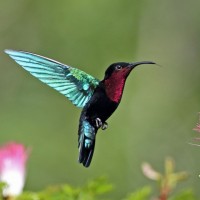 Lesser Antilles Endemics: A 3-Island ClassicDecember 2 - 13, 2025
Lesser Antilles Endemics: A 3-Island ClassicDecember 2 - 13, 2025 -
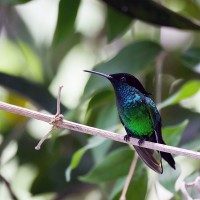 Caribbean Endemics of JamaicaJanuary 13 - 20, 2026
Caribbean Endemics of JamaicaJanuary 13 - 20, 2026
-
-
Sharon Goldwasser

Sharon became an avid birder and naturalist while a student at UC-Santa Cruz. After working as a field biologist for several years, she moved to Tucson for graduate school in ecology where she studied song mimicry by Lesser Goldfinches. In 1987, she rerouted her career into education, bringing her love of science to thousands of middle school students. Since retiring from the classroom in 2020, she has renewed her birding passion and is excited to share knowledge of birds and ecology with tour participants.
Other trips with Sharon Goldwasser
-
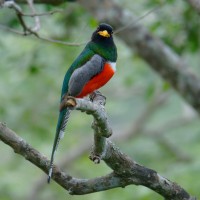 Arizona Monsoon Madness: Birding & Nature in a Season of Wonder!August 10 - 17, 2025
Arizona Monsoon Madness: Birding & Nature in a Season of Wonder!August 10 - 17, 2025 -
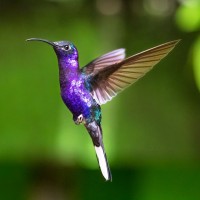 Costa Rica's Caribbean SideOctober 8 - 18, 2025
Costa Rica's Caribbean SideOctober 8 - 18, 2025 -
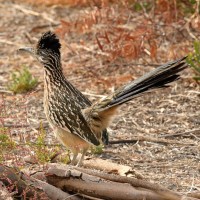 Arizona: Sunshine & SaguarosNovember 10 - 16, 2025
Arizona: Sunshine & SaguarosNovember 10 - 16, 2025 -
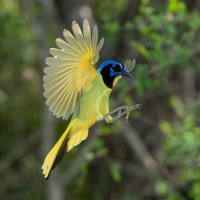 South Texas Birding & NatureJanuary 21 - 29, 2026
South Texas Birding & NatureJanuary 21 - 29, 2026
-
Essential Information +
Packing List +
Suggested Reading List +
Useful Links +
Photo credits: Banners: Cave Creek Canyon by Steve Wolfe; Naturalist Journeys Stock; Montezuma Quail by Greg Smith; Patagonia, Arizona by Kathy Pasierb; Sandhill Cranes by Peg Abbott; Great Horned Owl by Greg Smith; Long-eared Owl by Greg Smith; Gila Woodpecker by Sandy Sorkin; Pyrrhuloxia by Terry Peterson; Roadrunner by Peg Abbott; Coati by Peg Abbott; Dull Firetip by Pat Owens; Mountains, Pat Lueders; Snow Geese & Sandhill Cranes, Peg Abbott; Canyon Wren, Peg Abbott; Sandhill Crane, Hugh Simmons Photography; Gila Woodpecker, Janice Petko; Broad-billed Hummingbird, Hugh Simmons Photography; Western Meadowlark, Hugh Simmons; Sandhill Cranes, Hugh Simmons; Sandhill Crane, Hugh Simmons; Broad-billed Hummingbird, Hugh Simmons; Canyon Wren, Peg Abbott; Eared Quetzal, Peg Abbott; Landscape, Hugh Simmons; Arizona Group, Hugh Simmons; Pronghorn, Hugh Simmons; Red-naped Sapsucker, Hugh Simmons;







